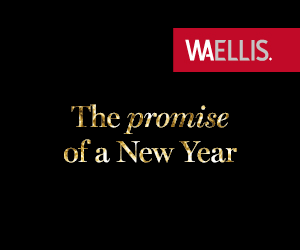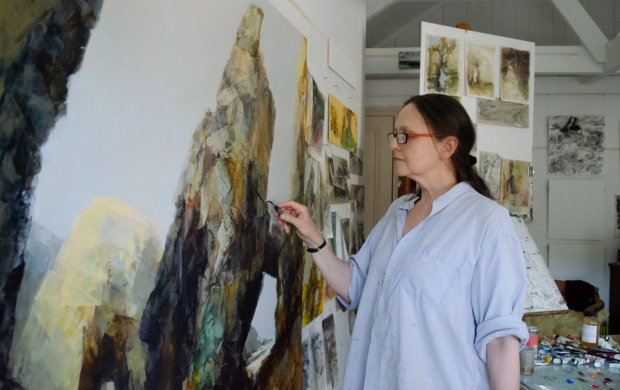Sarah Adams; The Maas Gallery, St James’s; 8th - 24th October; FREE
Sarah Adams returns to The Maas Gallery for a milestone 10th solo show in October.
Her latest works continue an 18-year association with the St James’s gallery and remain true to her fascination for the spectacular and often intimidating grandeur of the Cornish coastline.
But this collection also marks a change of mood, with uplifting perspectives that lead us from the darkness of the cliffs and sea caves and out into the expansive brilliance of the Cornish light.
Adams invites us to explore the intertidal zone, which she describes as a world of contrasts: calm amidst chaos, wide open spaces and intimate details, small events within a larger drama, where the beauty of Cornish geology is revealed by the sea.
Mineralised seams run through the cliffs, mined by the elements into fantastical forms. Verdigris and oxides stain the rocks with all the colours of the rainbow: a kaleidoscope of earth, sky and water, embellished with emerald green algae, jewel-like orange sponges, clusters of indigo mussels, and barnacles glowing golden in the sunshine.
In these paintings, the geometry and dynamism of the subject is explored through finely balanced composition. The shapes created carve up the pictorial space; columns of rock are set against the distant horizon, a curve flirts with the canvas edge.
A tiny point of focus leads the eye to a distant headland and the promise of further delights, drawing the viewer into the illusion of space, weaving through labyrinthine caves and stacks into the light of day.
Adams employs a rigorous working process to breathe life into these pieces: “Making observational work on site is so much more than a snapshot,” she says. “It is an experiential process, a record of being in a particular space over a period of time.
“Back in the studio this is reconstructed, the drawings and the memory of making them combine and I place myself back there. I want to communicate how it felt to be there, to invite the viewer to engage with the sense of place in a similar way. To drink it all in.”
Explaining their significance and the attention they hold, Rupert Maas said: “Inside a Cornish sea cave there’s no safety, you’re on borrowed time from the tide, exploring a secret world that belongs rightfully to the ocean. You wait for your eyes to adjust to give colour and contour to the black masses of wet rock, edged by glittering light, and wonder – until a chill shiver sends you blinking back out into the sun and air, a moment caught in Sarah Adams’s extraordinary paintings, which seem to come from the ancient rock itself.’










